How best to set these?
Reading of the wretched Nikon D700 manual surfaced some interesting questions. I read it using Good Reader on the iPad where I keep all my camera manuals. It’s a simple matter to annotate pages for subsequent follow up.
I short listed a few issues which I shared with a friend who is a D700 expert, as follows (parentheses refer to page numbers in the English manual):
In camera © Copyright information (page 343):
You can add this in the camera so it’s recorded with every picture. Those using Lightroom can also add it on import, but this seems a more robust approach as there is nothing to forget. Use the wrong import setting in LR and the information will missing if not recorded in the camera.
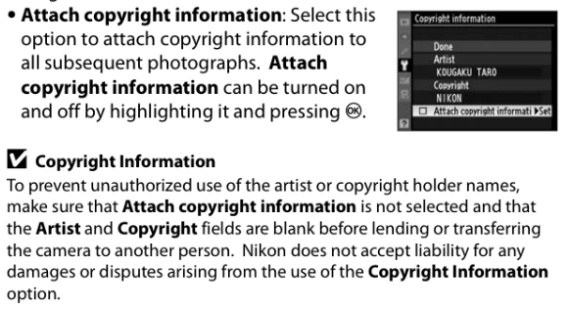
Non-CPU lenses (210):
Most older Nikon lenses (pre G and D series) have no CPU yet will fit the D700, some with reduced functionality. If you are prepared to cope with the rigors of manual focusing there is a cornucopia of ridiculously cheap Nikkors out there which will work, and which can be programed into the D700 to present correct EXIF data. Doing so also enables automatic power zoom with select Nikon Speedlight flashguns. A quick check discloses that some of the all time classic Nikkors of the film era, like the 20mm f/3.5, 24mm f/2.8, 50mm f/1.4, 55mm f/1.2, 85mm f/1.8, 105mm f/2.5, 180mm f/2.8, 200mm f/4, 300 f/4.5 and 500mm Mirror, are not only abundantly available lightly used, but prices are generally below $400, sometimes below $100! For the rarely used optic for a special occasion snap there’s much to like here. Indeed, I have a hankering for the 500mm Mirror optic. The D700’s viewfinder has a focus confirmation light to tell the user when the lens is in focus. It’s not AF but it beats nothing.

The 300mm f/4.5 Nikkor from the KEH catalog – $89!
Custom Menus (364):
You can create your own custom menu for frequently accessed options on the rear LCD screen.
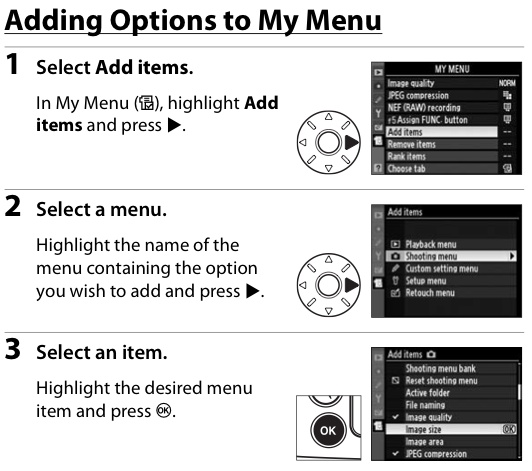
Sensor cleaning (393):
You can have this automated at On, Off, On and Off or manual! My colleague uses manual, used as needed. This approach saves wear and tear and speeds start-up time.
Active D-lighting (179):
An enhanced dynamic range setting which my friend believes is largely obsoleted by the enhanced controls in Lightroom 3. I’ll have to experiment with this one. Anything which reduces post processing time is a good thing in my book.
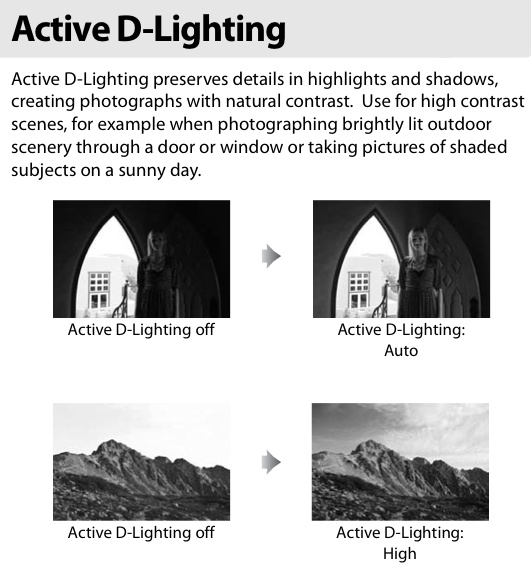
Color Space (181):
You can set sRGB or Adobe RGB. I use the latter for the broadest color gamut.
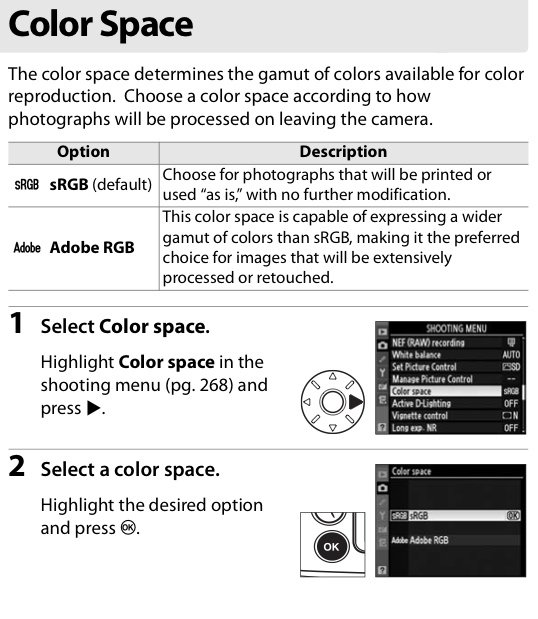
12-bit or 14-bit RAW files (68):
The 14-bit setting is reputed to store more shadow detail, at the penalty of file size.
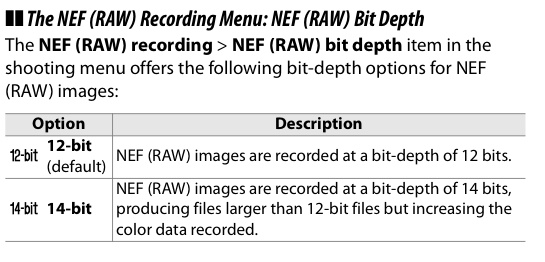
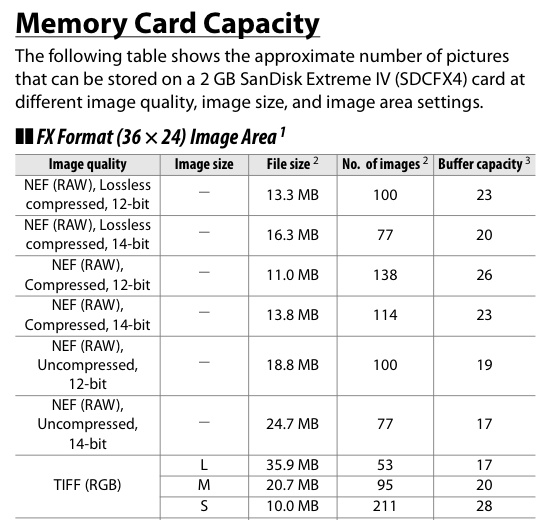
Bob Johnson has an interesting article, referred to me by my colleague, on the merits of 14-bit, and suggests that one good use for the Custom menu is to include a 12/14 bit toggle. Presumably the 14-bit setting would be reserved for very high dynamic range subjects where exposure is for the highlights, with consequent underexposure of the shadows, the latter being recovered in post processing.
Be sure to check Arun Gupta’s Comment below on why 14-bit and Adobe RGB go together.
GPS geotagging (213):
The D700 accepts Nikon’s shoe-mounted GPS unit ($190) with a wire and plug for the socket on the front, and stores geotagging information with the picture file. Aftermarket units sell for $67 and the trick.com site has an article explaining why you should save $123. I’m no geotagging maven but it can be fun and a small unit at low cost is tempting.
So there’s lots of value added from reading the poor manual, and the D700’s design is clearly one aimed at conferring a high level of flexibility in use.
I think on a color chart, Adobe RGB colorspace is twice the area of the sRGB color space. So to measure a color with the same resolution in Adobe RGB as in sRGB, you need twice the number of values, i.e., an additional bit. So I think if you’re happy with 12-bit sRGB, you’d want 13-bit Adobe RGB. Of course, your choices are 12-bit and 14-bit, so you should choose 14-bit Adobe RGB, or in color gamut restricted situations (are there any such?) 14-bit sRGB. At least, so it seems to me.
While Ken R*ckw*ll may be an acquired taste, I found his guide for the Nikon D200 a good way to distill info from the manual. He has one for the D700 here:
http://www.kenrockwell.com/nikon/d700/users-guide/index.htm
Caveat emptor etc…